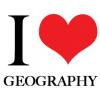- 0 replies
- 2,708 views
- Add Reply
- 0 replies
- 1,184 views
- Add Reply
- 0 replies
- 1,396 views
- Add Reply
- 0 replies
- 2,616 views
- Add Reply
- 0 replies
- 5,755 views
- Add Reply
NASA explores upper limits of GNSS for Artemis Mission

By Lurker,


The Artemis generation of lunar explorers will establish a sustained human presence on the Moon, prospecting for resources, making revolutionary discoveries and proving technologies key to future deep space exploration.
To support these ambitions, NASA navigation engineers from the Space Communications and Navigation (SCaN) program are developing a navigation architecture that will provide accurate and robust position, navigation and timing (PNT) services for the Artemis missions. GNSS sign
U.S. ally receiving modern military GPS user equipment

By Lurker,
Germany is the first United States ally to order the new military code (M-code)-capable Military GPS User Equipment (MGUE).
The Space and Missile Systems Center’s Space Production Corps achieved the major milestone on Sept. 30, when GPS Foreign Military Sales (FMS) office received its first M-code MGUE order.Germany is expected to receive delivery of its first M-code receivers this year.
SMC is facilitating international access and availability of M-code user equipment as directed by t
The Sea of Galilee’s Water Levels are on the Rise

By Lurker,

The Sea of Galilee (also known as the Sea of Tiberias, Lake Tiberias, Lake of Gennesaret, and Lake Kinneret), located in northeast Israel, is the world’s lowest freshwater lake. After the Dead Sea, the Sea of Galilee is the world’s second-lowest lake in the world.
The lake measures 21 kilometers (13 miles) north-south, and it is only 43 meters (141 feet) deep.
Most of the inflow of water to the Sea of Galilee arrives via the Jordan River from the north, although some underground spring
The Use of Gravimetry Satellites for Measuring Ice and Sea Level Change

By Lurker,

According to the National Snow and Ice Data Center in the United States, about 69% of freshwater supplies are stored in Earth’s ice sheets and glaciers. This means measuring water content in ice and glaciers is critical to understanding future changes to water supplies as well as sea level rise, where melting glaciers and ice sheets are the biggest contributing factor in this rise.
Modern satellites now allow us to make more accurate mass measurements to large areas covered by ice, which al
Thoughts about Mapbox 2.0 becoming Proprietary

By MarcusP,
I am an avid user of the Mapbox JS library, and I use to map points of interest in some of our projects, like locations of survey targets for monitoring purposes.
https://www.mapbox.com/mapbox-gljs
THe latest branch now includes improved support for 3D terrain, but I am still nt seeing support for negative elevations- i.e underground.
But with the news that Mapbox 2.0 is no longer open source, What are your thoughts about it?
Certainly it has an imapct on the projects th
-
Forum Statistics
8.8k
Total Topics43.5k
Total Posts



